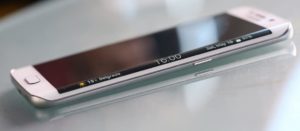Going to the cinema has increased enormously in cost in recent years. What was 5 marks at the turn of the millennium is now almost 15€. However, I don't want to sound too much like the older generation - of course there are also features included that were not yet available at Mark prices. 3D, for example, or the new Dolby Atmos, which enhances every visit to the cinema with incredibly clear 360-degree sound. For my taste, however, this is exactly why only certain ones are worthwhile films in the cinema. For example, “John Wick 2” or “The Fast and the Furious 8” come to mind at the moment. "Lommbock" or "La La Land" are not worth 15€ to me. And I mean that completely independently of the actual content of the individual films, "La La Land" obviously has to have something to offer as a six-time Oscar-winning film. No, I'm more concerned with the type of film. "La La Land", without action scenes or 3D effects, I prefer to enjoy this film in front of the TV. Samsung presented a screen at the "CinemaCon 2017" in Las Vegas that may soon change this attitude. "4K-LED" doesn't leave interested parties guessing for long. Razor-sharp and ten times brighter than before cinema should become an experience again (almost) independently of the film.
HDR as competition for projectors
The high resolution and brightness are not the only characteristics of Samsung's potential cinema revolution. The screen itself is an attraction because it eliminates the need for a projector. Equipped with HDR, cinema images that have never been seen before should be able to be shown.
HDR stands for "High Dynamic Range". HDR images impress with a digital image that reproduces large differences in brightness in great detail. are important in the implementation graphics Cards, which enable high "rendering", i.e. edges between objects can be drawn clearly and distinctly in order to display the image sharper overall.
Samsung Electronics America commented on the new "High Dynamic Range LED Theater Display": "This technology brings high-quality picture quality to the cinema halls, which makes the viewer feel as if they are directly part of the action in every scene". The American branch of the South Korean company is probably not entirely wrong. The technical information on the screen is impressive, even without having seen the image live.
The data
The screen delivers an ultra high-resolution 4K image (4.096 x 2.160 pixels). Equipped with the in-house "direct-LIT" technology and HDR, contrast values should be achievable that are around ten times higher than with previously available cinema projectors. The brightness should also not be easy to imitate. Samsung speaks of 146 foot-lamberts (fL). Even if you probably don't know what to do with Foot-lambert, the comparison with a normal cinema screen is sufficient. The brightness of the latter is only 14 fL.
However, the high dynamic range LED theater display has one disadvantage in terms of size. Even if size doesn't always matter, the width of around 10,4 meters is relatively small. Conventional screens of the projector competition are on average between 13,7 and 19,8 meters wide. Nevertheless, one cannot deny the idea anything. Brighter and sharper, that sounds pretty good even with comparatively smaller dimensions, I think.








